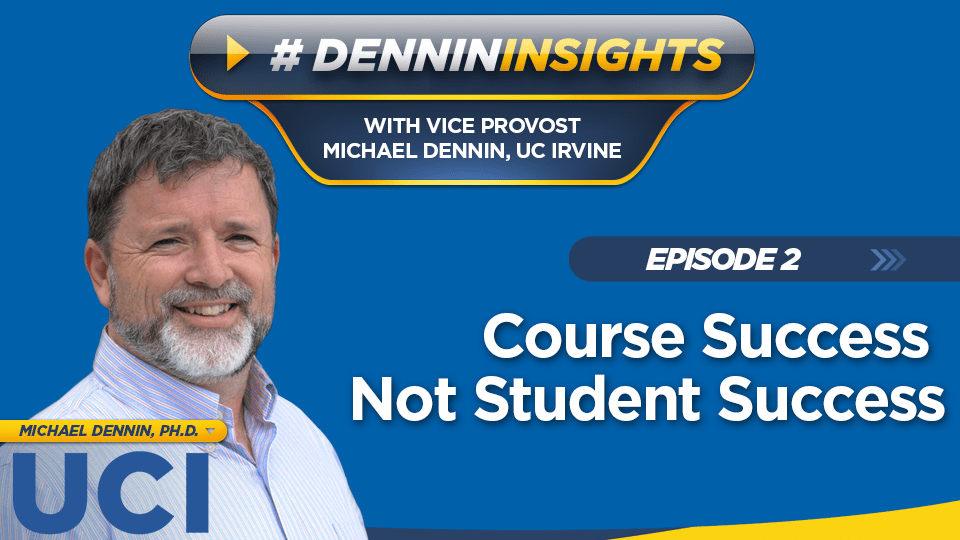
As we look forward to the other side of the pandemic, many people are asking a fundamental question—what will instruction look like post-pandemic? However, I find that the discussion of this question is too often focused on the narrow issue of “in-person versus online” when now is really the ideal time to evaluate course structures more broadly. This is especially true as higher education wrestles with issues of structural racism, equity, inclusion, and student success.
As higher education wrestles with these issues, most of the focus is on the students. This seems obvious. After all, it is the students that we want to help to succeed. However, for institutions like UCI, because students have met our admissions criteria, student success should be an assumption of the university experience. Therefore, what we really need to focus on are the potential barriers to student success inherent in our system, and ask ourselves whether or not we, as an institution, are successful at serving students. And, as courses are the fundamental unit of instruction, we need to ask the critical question—are our courses successful?
But what makes a course successful? In our current system, we tend to focus on the two most highly variable elements of instruction: the student and the instructor. Yet when we consider student success in the aggregate, these may be the least relevant variables. While it is certainly true that individual students and instructors change throughout their time attending or working at a university, when taken as a whole, students and instructors generally are who they are—they are not variables that can be easily manipulated. Not so with the core structures of a course. In fact, research shows that the structure of the course is often one of the most relevant factors for determining student success in the aggregate.
What do I mean by course structure? I am specifically referring to what one might identify as “instructor-independent” elements of a course. One can study how these different structures, essentially independent of the instructor’s style and particular execution, impact student outcomes. For instance, there are countless instructor-independent elements of a course that require decisions:
- Is it a lecture, seminar, lab, studio, or other type of course?
- What is the proper instruction team?
- Do we need TAs, graders, and/or Learning Assistants?
- How is assessment done?
- Do we utilize peer grading?
- What are the expectations around student participation?
- Are there separate discussion sections, and how are they used?
- Is the course project-based?
- Is there group work in the course? And if so, are the students trained to work as a team?
Research also shows that there is no one-size-fits-all course structure that will always work best. The structure of a course depends on the goals for and nature of said course, the background and talents of the students, and the skills of the instructor. Despite this, many of us have not carefully evaluated and designed the structure of our courses to match our goals and the students. Instead, we adopt the structures we experienced because they worked for us. However, our students are not us.
It is imperative that we continue to research and understand the impact of course structures on our students’ success and have robust discussions about the design of individual courses and how those fit into the curriculum as a whole. This evolution is necessary if we want to ensure our courses successfully serve the diverse students at our institutions.
Critically, looking at course success (as opposed to student success) fundamentally changes how we look at student outcomes. Instead of asking about graduation gaps or other outcome gaps by student characteristics, we should be asking about outcome gaps by course and course characteristics in the context of different groups of students. This allows us to evaluate the impact of certain course structures on different student demographics with a focus on the relevant unit of change—the course, not the student.
Ultimately, this embraces the concept that it is not student deficits that are the issue, but institutional barriers and challenges to success—something that we need to accept and understand as a fundamental element of any selective institution.
Recent Comments